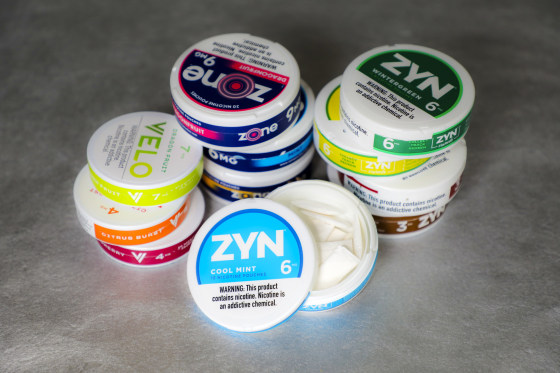In recent years, the emergence of nicotine pouches has transformed the landscape of tobacco alternatives, and among these products, Zyn has gained notable popularity. Introduced as a smokeless and spitless option, Zyn has appealed to a diverse demographic, ranging from traditional tobacco users seeking to reduce their intake to newcomers curious about nicotine without the harshness of smoking or chewing. Understanding the timeline of Zyn’s invention provides valuable insight into the evolving preferences of consumers and the broader trends within the nicotine market. This article delves into the origins of Zyn, tracing its development and the context in which it was created. By examining key milestones and the innovative strategies employed by its manufacturers, we can appreciate how Zyn has positioned itself as a significant player in the global nicotine industry. As regulatory landscapes continue to shift and consumer habits evolve, the history of Zyn not only highlights the ingenuity behind its formulation but also reflects the changing attitudes towards nicotine consumption in contemporary society. Through this exploration, we aim to provide a comprehensive overview of Zyn’s journey and its impact on the modern approach to nicotine use.
Origins of Zyn: Invention Timeline
The development of Zyn can be traced back to the growing demand for alternatives to traditional tobacco products, particularly among health-conscious consumers seeking reduced-risk options. The initial concept of nicotine pouches emerged in the early 2010s, aiming to provide a smoke-free experience without the complications associated with chewing tobacco or vaping. This innovation gained traction as manufacturers recognized the potential for a product that offered a discreet and convenient way to consume nicotine, leading to the formulation of Zyn in 2016 by the Swedish Match company.
The introduction of Zyn marked a significant milestone in the nicotine product landscape, appealing to a diverse audience, including those looking to break away from smoking. With its unique formulation and a variety of flavors, Zyn quickly gained popularity, prompting a broader shift in consumer preferences towards smokeless and non-combustible nicotine options. The question of when Zyns were invented thus highlights a pivotal moment in the evolution of tobacco alternatives, reflecting changing attitudes towards smoking and nicotine consumption across various demographics.
Key Milestones in Zyn Development
The evolution of Zyn has been characterized by several key milestones that have shaped its trajectory within the nicotine market. Following its launch in 2016, Zyn’s rapid adoption highlighted the increasing acceptance of nicotine pouches as a viable alternative to traditional tobacco products. By 2018, Zyn had expanded its flavor offerings and product variations, catering to diverse consumer tastes and preferences. This strategic diversification not only reinforced its market presence but also solidified its reputation as a leader in the smokeless nicotine segment.
In subsequent years, Zyn’s growth was further propelled by innovative marketing strategies and collaborations with retailers, which enhanced its visibility and accessibility. Notably, the introduction of new strengths and the consistent emphasis on product quality contributed to consumer loyalty. As awareness of reduced-risk nicotine alternatives continued to rise, Zyn capitalized on this trend, positioning itself as a primary choice for those seeking smoke-free options. The question of when were Zyns invented frames this remarkable journey, underscoring their role in redefining how consumers interact with nicotine products.
Zyn’s Rise in Popularity Explained
The surge in Zyn’s popularity can be attributed to a combination of changing consumer preferences and a growing awareness of health implications associated with traditional tobacco use. As more individuals seek alternatives to smoking, nicotine pouches like Zyn have emerged as appealing options due to their discreet usage and variety of flavors. This shift aligns with broader public health initiatives aimed at reducing smoking rates, making Zyn an attractive choice for both former smokers and those looking to avoid tobacco altogether.
Additionally, social media and influencer marketing have played crucial roles in amplifying Zyn’s visibility among younger demographics. The product’s sleek packaging and modern branding resonate with a lifestyle-oriented audience, further driving its appeal. By successfully positioning itself within a market increasingly focused on convenience and flavor, Zyn has not only captured attention but also established itself as a prominent player in the nicotine pouch category, contributing to the ongoing conversation about reduced-risk smoking alternatives.
In conclusion, the invention of Zyns marked a significant evolution in the way nicotine is consumed, catering to a growing demand for smoke-free alternatives. Emerging in the early 2010s, these pouches have not only provided an innovative option for nicotine users but have also sparked broader discussions about health, regulation, and consumer preferences. As the market for nicotine products continues to expand, Zyns represent a notable intersection of tradition and modernity, appealing to both seasoned users and newcomers alike. Understanding their history offers valuable insights into the future of nicotine consumption and the ongoing shift towards less harmful alternatives.








/socialsamosa/media/media_files/2zHb3sGz3BcGQQrVtOoh.png)
